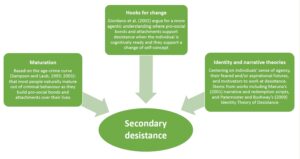A system under pressure
Today (9 October 2018), the probation inspectorate team published the second in its new series of research bulletins.
This bulletin examines the quality of probation public protection work. Rather like the first bulletin (which examined the quality of probation assessments), it found that standards of work have fallen since Transforming Rehabilitation and that Community Rehabilitation Companies are delivering a poorer service than their public sector counterpart the National Probation Service.
The report is based on a large dataset from nearly 3,000 (2,849) case assessments conducted by probation inspectors. 1,815 of these were conducted under the old probation system between 2009-2012 and 1,024 come from the area quality and impact inspections undertaken in 2016 and 2017.
Key findings and implications
The bulletin presents three main findings:
- The quality of public protection work was found to have deteriorated since 2012. This decline was most marked in cases now allocated to Community Rehabilitation Companies (CRCs). Many serious further offences are committed by those who are judged to present a low or medium risk of serious harm, and CRCs thus need to give greater attention to public protection work, encompassing assessment, planning, reviewing and management oversight.
- It is of particular concern that the assessment of risk of harm to both known adults and to children and young people had deteriorated in cases now allocated to CRCs. All these providers need to ensure that any issues relating to domestic abuse and child safeguarding/protection are fully identified and analysed.
- There was the greatest scope for improvement across the National Probation Service (NPS) and CRC cases in terms of reviewing progress and in responding appropriately to changing circumstances. Risks, needs, protective factors and circumstances can change over time, and any new behaviours that might be linked to risk of harm must be identified, analysed, and taken into account when reviewing planned activities and the required constructive and restrictive interventions.
Risk of serious harm
The bulletin sets out the Inspectorate’s expectation of public protection work:
High-quality public protection work can minimise – but not eliminate – the potential for risk of harm to society. Accordingly, a significant element of HMI Probation work is to assure that practice in this area is of high quality and is firmly grounded in the best available evidence and learning.
Risk of harm has two dimensions: the likelihood that a harmful offence will occur and the impact of that offence upon the victim(s). The risk of harm assessment should inform the risk management plan for the service user, outlining interventions that can change risky behaviour; restrictive conditions that limit the opportunity to offend and access victims; and the monitoring and control procedures to ‘watch and warn’ the service user, victims and
other agencies.
The bulletin’s findings are presented under three headings: assessment, reviewing and overall delivery.
Assessment
The research bulletin sets out the proportions of cases in which inspectors deemed that there had been
sufficient assessment of the risk of harm the service user posed to adults known to them or known by agencies to be potentially at risk, encompassing any domestic violence and abuse concerns.
The bulletin compares the quality of public protection assessments carried out in 2009-2012 (pre-TR) with those undertaken under the new system in 2016/17. Assessments were adjudged to be of sufficient quality in 86% of cases in 2009/12 compared to just 75.3% in 2016/17. When looking separately at CRC and NPS cases, there was a significant deterioration in the sufficiency of assessment in those cases now allocated to CRCs; a fall of 14 percentage points compared to a fall of 6 percentage points for those cases now allocated to the NPS.
Reviewing
Inspectors examined whether the responsible officer had ensured that assessments and plans were reviewed and updated following any significant changes in the circumstances of the service user and the case. Here again they found that reviews of a sufficiently high quality had fallen by 10 percentage points overall, with a fall of 14
percentage points in CRC cases compared to a fall of 5 percentage points in those cases now allocated to the NPS.
Overall delivery
Inspectors also consider whether all the actions taken by the responsible officer were appropriate to the risk of harm posed by the individual, relevant to the needs of the case, and sufficient to complete the interventions in the plan. Here the degree of deterioration in quality was slightly less marked with inspectors satisfied in just 63.7% of the 2016/17 cases compared to 71.7% cases from 2009/12. Of some comfort was the finding that the quality of public protection was higher in cases involving domestic violence perpetrators (75%, compared to 59% in non-perpetrator cases) or in which there were child protection concerns (73%, compared to 63% in cases without such concerns).
Conclusion
These findings are clearly very worrying and the Inspectorate’s bulletin concludes by drawing attention to the new inspection standards which make it very clear to probation providers what is expected in terms of public protection, with key questions within the assessment, planning, implementation and reviewing standards.
To achieve an outstanding rating for any of these standards, a provider will need a sufficient focus upon keeping other people safe in a large majority (80%+) of its inspected cases.









